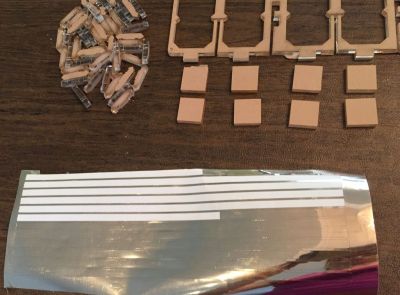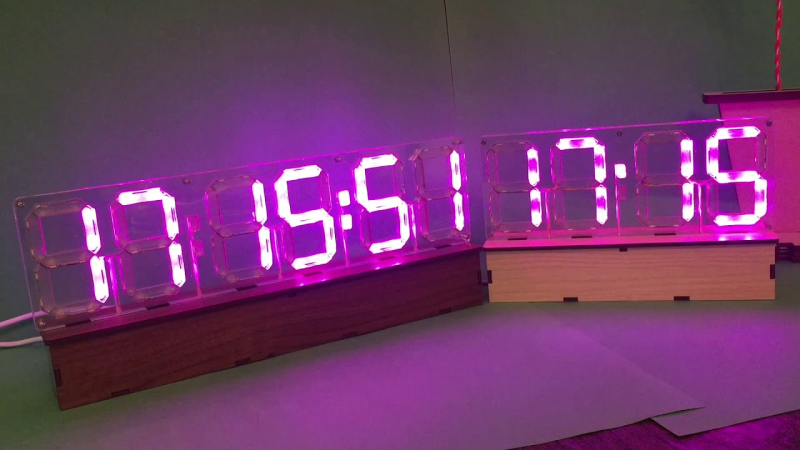People keep saying that time has lost all meaning now, but we’re still over here divvying up the days with hacks. Most of the hacks you see here are open source. But if you want something even more transparent to meter out the meaninglessness, we invite you to make one of these clearly awesome see-through clocks, which happens to be both.
 A word of warning though — according to [GeekMomProjects], this is an incredibly fiddly build with tight tolerances everywhere that acrylic meets acrylic or an LED strip. We can see how it might be like forcing fragile puzzle pieces together. Since the whole thing is crystal clear acrylic, light is going to go everywhere.
A word of warning though — according to [GeekMomProjects], this is an incredibly fiddly build with tight tolerances everywhere that acrylic meets acrylic or an LED strip. We can see how it might be like forcing fragile puzzle pieces together. Since the whole thing is crystal clear acrylic, light is going to go everywhere.
[GeekMomProjects] cleverly blocked the escaping light by painstakingly applying non-conductive adhesive foil to the edges of all the smaller pieces. In spite of all that work, we think it would be worth it to have such a fantastic timepiece glowing away the hours somewhere in the house.
Electronically speaking, this beauty is pretty simple. The lights run off of an ItsyBitsy M4 Express, and the time is separately fetched with an ESP8266. [GeekMomProjects] had so much fun that she made one with seconds and one without. Check out their RGB dance routine after the break.
If you prefer your blinky 7-segment clocks a bit more utilitarian, here’s a clock made of shelves.















Simple but very effective, brilliant!
Challenge: use projection to steer the LED light inside the acrylic sheet to hit carved-in segments on the front face. Maximum sheet thickness: 10 mm or 3/8″
Some fibercoupled serial RGB LEDs on the market yet?
So far, i’ve only seen at most a single RGB LED coupled (very inefficiently) into a bundle of glass fibres.
I’d think you could hide away all the LEDs in the base and just use glass fibre to guide the light into the different segments, then use some scatter lens, or something like that, to spread the light across the segment surface.
The 10mm thickness restriction should not be a huge issue. Either you get the light to the segments from the side, or you could probably even try to set a tiny 45° mirror on the end of each fibre to “bend” the light around very tight corners, allowing you to get the fibre path directly behind the segment display and allowing for a tighter grouping of individual segment displays…
You didn’t quite get the idea.
The piece of acrylic acts as a light guide, which is used for illuminating figures that are frosted or carved on the face of it. By controlling the angle at which the light enters the plastic, you could make the light skip a feature and illuminate the next.
https://en.wikipedia.org/wiki/Total_internal_reflection#/media/File:Total_internal_reflection_by_fluorescence.jpg
This is beautiful! And it’s great to see some tips on how to do it.
How hard would it be to shrink it into a wrist watch ?